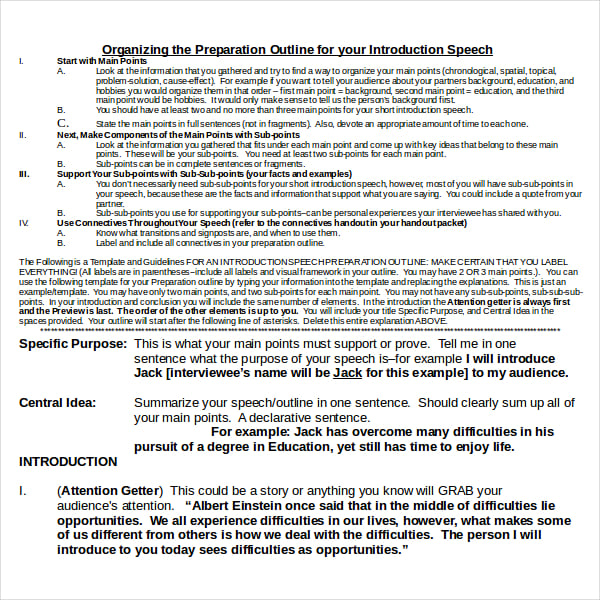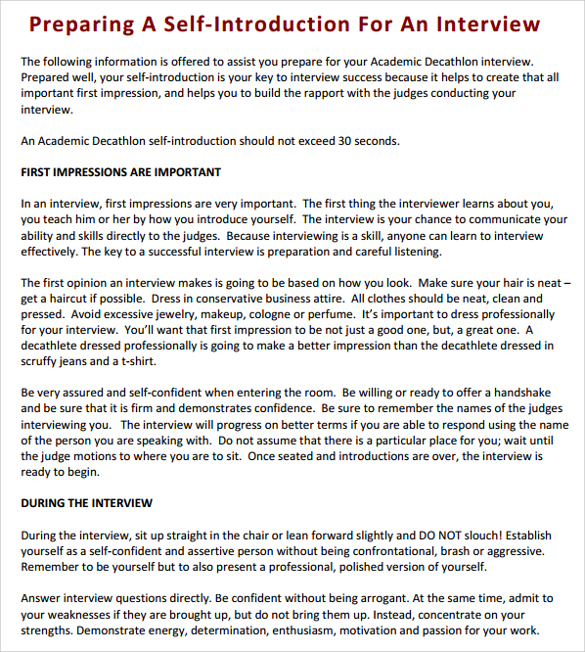
It explains who you are, what you do and what others should know about you. Self-introduction is a way of introducing yourself to employers or people who you meet for the first time. In this article, we will discuss the definition of self-introduction, explore the steps and tips required to write an introduction and read about five examples of introducing yourself in different situations. Having a self-introduction sample is useful when you meet an interviewer, new colleague, supervisor, mentor or a new connection. To capture the audience's attention and build long-lasting relationships, it is essential to provide an engaging introduction. You can also find examples of Main Points.A self-introduction will help your acquaintances learn more about your experience and skills. Speech 151 students can find more examples of specific purpose statements and central ideas on pages of 240-251 of our text. ( Main Point 4) "The 'Auana has developed into a unique form of dance and storytelling.".


I will inform my audience about the two major forms of hula.

Informative speech specific purpose statements: Click here for more examples of Specific Purposes, Central Ideas, and Main Points. For an informative speech you will want to start your specific purpose statement with "I will inform my audience about." A Specific Purpose Statement for an informative speech will be phrased much like the following statements. In Speech 151 for the informative speech your general purpose is to inform. Restrict your Specific Purpose to one idea only. You don't acutally say it in your speech. Your Specific Purpose Statement is used to develop your speech. The general purpose of any speech will be either to Inform Motivate/Persuade or Entertain your audience.Īs soon as you know the general purpose of your speech you can develop your Specific Purpose Statement (What the speaker will accomplish). Your Specific Purpose Statement & Central Idea for Public Speaking


 0 kommentar(er)
0 kommentar(er)
